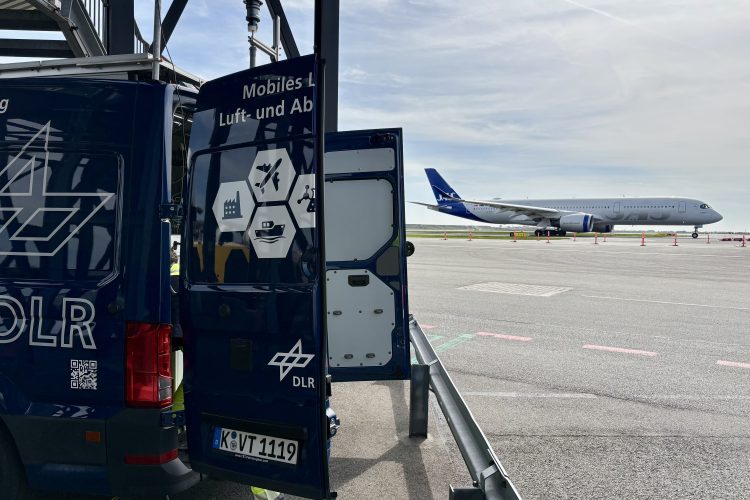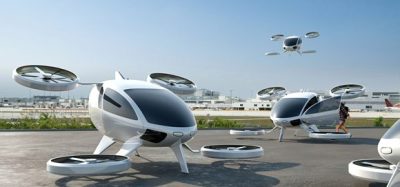Copenhagen Airport launches FuelTrack to connect jet fuel composition with aircraft emissions and air quality
Posted: 6 May 2025 | Gabriel Higgins | No comments yet
Copenhagen Airport’s FuelTrack study explores how jet fuel properties impact aircraft emissions and local air quality during real-world operations.


Credit: Copenhagen Airport
Copenhagen Airport (CPH), in collaboration with the EU-funded ALIGHT project, SAS, and the German Aerospace Centre (DLR), has launched FuelTrack — a pioneering campaign to produce the first comprehensive dataset directly linking jet fuel properties to aircraft emissions and local air quality.
Copenhagen Airport jet fuel emissions study reveals vital data for cleaner aviation future
Until now, fuel property data at individual aircraft level has remained elusive due to complex fuel distribution systems and limited monitoring. While lab and engine test rig conditions have shown that fuel composition, such as aromatics and sulphur levels, can affect combustion and pollutant formation, FuelTrack is taking this analysis into real-world airport operations.
“We are creating a unique scientific dataset,” said Dr Benedict Enderle, Senior Scientist at DLR’s Institute of Combustion Technology. “By analysing both fuel properties… and real-time aircraft emissions during taxi operations, we’re gaining unprecedented insight into how fuel properties influence combustion performance and emissions.”
Join our free webinar: Revolutionising India’s travel experience through the Digi Yatra biometric programme.
Air travel is booming, and airports worldwide need to move passengers faster and more efficiently. Join the Digi Yatra Foundation and IDEMIA to discover how this groundbreaking initiative has already enabled over 60 million seamless domestic journeys using biometric identity management.
Date: 16 Dec | Time: 09:00 GMT
rEGISTER NOW TO SECURE YOUR SPOT
Can’t attend live? No worries – register to receive the recording post-event.
Though the campaign will mostly measure conventional fuels, the growing use of Sustainable Aviation Fuels (SAF) due to regulation is expected to introduce greater variability. “To fully understand and leverage this potential,” Enderle added, “we need detailed data… from real-world operational settings.”
Peter Wiboe Holm, Senior Sustainability Advisor, noted: “The majority of the fuel burned… is the fuel the aircraft were refuelled with at the departing airport. We are… very interested in understanding this natural variation… and using the results to strengthen our… air quality programme.”
FuelTrack will gather:
- Real-time taxiing emissions
- Detailed fuel samples from aircraft and airport systems
- Flight data across multiple aircraft types
- Fuel property variations from various airports
Using DLR’s mobile, high-fidelity measurement lab, the campaign enables the first direct link between fuel type and emissions during normal operations. The findings will help optimise fuel blends, inform SAF evaluations, improve airport air quality, and shape future aviation policies. Results are expected in autumn.
Stay Ahead in Aviation — Subscribe for Free!
Get exclusive access to the latest aviation insights from International Airport Review — all tailored to your interests.
✅ Expert-Led Webinars – Learn from industry leaders
✅ Weekly News & Reports – Airport updates, thought leadership, and exclusive interviews
✅ Event Invitations – Be part of the International Airport Summit
✅ Partner Innovations – Discover the latest industry trends
Choose the updates that matter most to you. Sign up now and stay informed, inspired, and connected — all for free!
Thank you for being part of our community. Let’s keep exploring the future of aviation together!
The International Airport Summit is open for registration!
Date: 19 – 20 November 2025
Location: JW Marriott Hotel Berlin
At our flagship event of the year, we will dive into the future of airport operations, with expert-led sessions on passenger experience, innovative smart technologies, baggage handling, airside operations, data, security, and sustainability.
This is where global airport leaders come together to share insights, challenges, and real-world solutions.
Limited complimentary passes are available for eligible professionals – first come, first served!
Related topics
Aircraft, Airport development, Cleaner, Greener Airports: Making Aviation More Sustainable Series, Data, Emissions, Innovation, Sustainability, Sustainable Aviation Fuel (SAF)
Related airports
Related airlines
Related organisations
DLR's Institute of Combustion Technology, EU-funded ALIGHT project, German Aerospace Center (DLR)

















